HOT SPRINGS, VA – Everyone’s got to start somewhere. Certainly a well-worn cliché’, but one that’s inherently true and not even that ridiculous when you really think about it. And it’s definitely gospel when you’re talking about the Old Course at The Homestead, because the layout’s first tee is the oldest in continuous use in the United States-- established in 1892 and played ever since. That’s even 21 years before the course’s famous architect, Donald Ross, arrived on the scene to expand the layout’s six holes to a regulation eighteen.
Everyone’s got to start somewhere--and Golf in America, to a certain extent, started right there at the Homestead with the first tee.
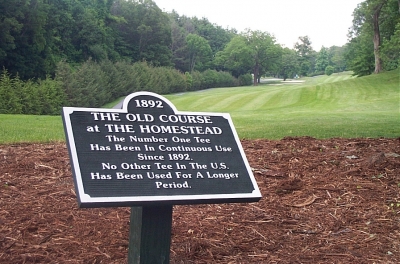 |
| In case you haven't learned about the Old Course's Historic first tee box, there's a sign there to instruct you. |
But there’s a lot more to the Old Course than a plot of flat ground to hit your round’s initial golf shot. Forget that you’re in the shadows of one of the grandest resorts in the United States—you are—but the course itself is a timeless classic. Even driving into the town of Hot Springs you’ll sample the flavor. Passing several of the holes, you’ll notice a traditional style golf course, and right away begin salivating at the prospect of devouring an afternoon of exceptional golf.
The Old Course is everything that golf once was, and still is. As alluded to previously, it’s a Donald Ross design, complete with the old style small greens and testy contours (some with the Ross’ signature ‘saucer’ shapes), rolling mountain fairways and sight defined golf shots. But it’s also akin to the modern game, having been ‘upgraded’ by Rees Jones in the mid nineties. It’s the best of the old, and the best of the new. It’s like an ancient Japanese Tea Caddy used during a ritualistic Tea Ceremony—where simplicity is honored as well as perfunctory.
Don Ryder, The Homestead’s Director of Golf, puts it mildly when he says the Old Course is unique: “In addition to the signature qualities of the Donald Ross design, we offer one of the more interesting hole configurations you’ll find—six par threes, six par fours and six par fives, playing to a little over 6200 yards from the back tees.”
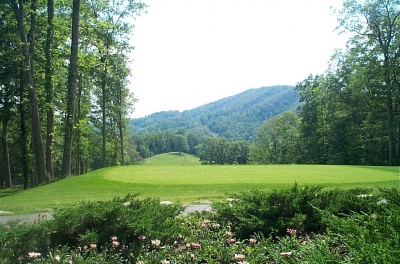 |
| Mountains, trees and flowers by the tee box. Can it get any better? |
“The Old Course is a lot of our guests’ favorite because it’s challenging without being overdone or exaggerated. Donald Ross defines every shot, and true to his philosophy, the course rewards precision over power. It’s just a great place to come out, spend a few hours, and get down to the basics of the game of golf.”
Rees Jones says it was important to make the requested upgrades to the course’s facilities without significantly altering the Ross design wherever possible. “We were brought in to install a first-rate practice fairway, so we needed to change a few things in order to make everything fit the available land—but we were definitely conscious of leaving as much intact as possible. I think we succeeded.”
Jones’ design associate, Keith Evans, echoed Rees’ thoughts on his ‘less is more’ theory. “From our standpoint, whenever you remodel a course, you’re trying to minimize disturbance to the existing layout—and that’s especially true when you’ve got an old style classic like the Homestead Old Course. We moved a couple tees and built a couple new holes to accommodate the practice facility, but for the rest of the layout, we left it as Ross intended.”
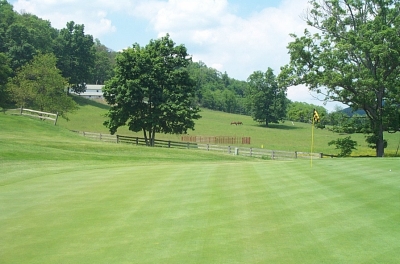 |
| Fields with livestock still border some holes at the Old Course, adding to the atmosphere that much more. |
That’s wise thinking, especially since whatever Ross did, you can’t go wrong with. The course is simple looking, but hardly defenseless. Ryder points out that it may look straightforward, but it’s actually a shotmaker’s course. Placement off the tee is essential to marking down low scores, because missing the fairway will penalize you—either with a lie in deep rough, or with a poor shot angle into a small green.
So don’t go into it with the belief that Big Bertha’s going to give you driver-sand wedge into every par five. If you’re in the rough, you’re fortunate to get on in regulation. And don’t forget this is a mountain course. You’ll find yourself distracted by the incredible beauty of the location, but the nature of the terrain will remind you where you are—there’s hardly a flat lie around. Uphill, sidehill, downhill—take your choice—assuming Mr. Ross would even ask. Most of the time, you’re happy to take what he’ll give.
The course is challenging while appearing easy. Brilliance defined. I’m sure Donald Ross is designing courses in heaven that probably even fool the saints.
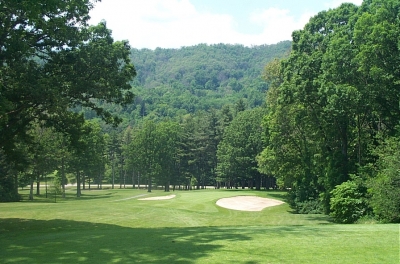 |
| You can't see it from this viewpoint, but this par three features a classic Donald Ross roll-off green. Don't go long. |
After reading the sign commemorating the oldest tee in continuous use in the country, you’ll tee off to an uphill par five. Straight as an arrow—keep your ball in the fairway and you’ll have a shot at getting there in two. A large oak tree borders the left side of the fairway, but doesn’t really come into play. Good golf hole.
Three and four are the outward nine’s two remaining par fives. Add the par three second and fifth holes into the mix, and you don’t reach a par four until the sixth hole. I bet that doesn’t happen much except on a pitch and putt executive course—which probably has tee mats to boot. But it’s part of the charm on this course.
Five is a great par three. Downhill and a mere 163 yards, don’t be fooled. The green is deceptive—it’s a true Donald Ross classic—seems to slope down from the middle on both sides. Hit the ball a tad long, and the ball will roll off the back, as I found out. Miss to the left or right and you’re in sand. Center of the green! Easy as that.
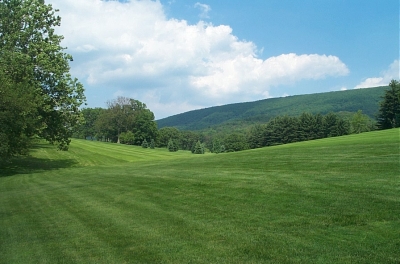 |
| The rough on the Old Course was some of the thickest we saw this season. Everywhere you look, outstanding playing surfaces. |
The sixth hole’s second shot is a great one. If you hit a reasonable drive, you’ll have a short iron to an elevated green with steep banks on either side—uphill on the left and downhill on the right. You know it’s steep when there’s a staircase leading up to the green. Don’t be in the bunkers—so miss left if at all.
Eight’s got a very interesting tee shot—from the back tee box, you’ll hit your shot underneath a large tree, with a branch that looks like it could very well come into play. Probably more visual than anything, another example of how a classic golf course can ‘grow’ into something special—to present all sorts of shots.
Twelve and thirteen are two more outstanding par fives—as on the front, consecutively placed. Twelve’s tee shot is uphill, and you’ll need a strong carry from the back tees to reach the short cut. The second shot is straight but slightly blind, with well struck fairway woods having a chance to roll down near the green with a minor dogleg right. Trees and a slope guard the left side.
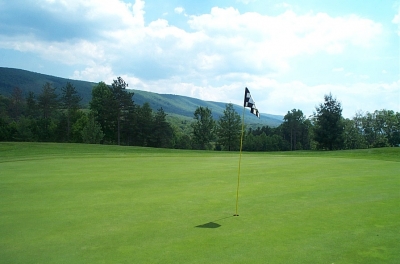 |
| The putting surfaces weren't too fast, nor too slow. Just right. |
Thirteen presents incredible views and a steep downhill tee shot. Again, be mindful of the fairway and hit it straight—as even a seemingly good drive may roll through the short grass if not positioned properly. Not really reachable in two (at 581 yards), second and third shots are used for strong positioning for your birdie putt.
Fourteen’s tee shot is nearly as spectacular as the previous hole’s, and at 355 yards, gives you a chance to leave a sand wedge into the green if your drive’s a good one.
Seventeen’s another excellent par four. I wouldn’t call the tee shot blind, but you’ll be rewarded for a long ball—by carrying it over the horizon into the flat for your approach shot. If you’re short of that, however, look for another uneven lie. A second option is to lay up your tee shot with a long iron and reach a higher plateau, calling for more club into the green. Risk-reward all the way.
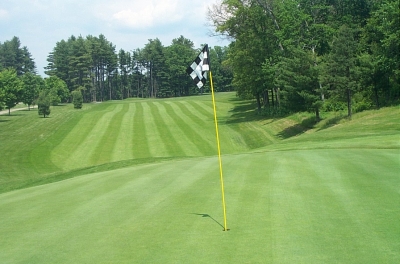 |
| Here, the fairway cut leads straight to the green. No tricks on the Old Course, just enjoyment. |
Eighteen’s a brand new hole, and a nice 171 yard par three to finish up. I’d think it unusual to finish with a par three on most courses (actually, the Cascades’ #18 is also a one shotter), but not here. On the Old Course, even the unusual feels natural—and traditional.
For your drive back to the resort center, you’re treated to grand views of The Homestead hotel. It’s hard to contemplate a more fitting end to a round of golf—and just goes to show, to obtain a terrific conclusion, everyone’s got to start somewhere. Why not at the Old Course?
Details:
The Old Course at The Homestead
P.O. Box 2000
Hot Springs, VA 24445
Course Designer: Donald Ross
Some additions made by: Rees Jones; Keith Evans
Director of Golf: Don Ryder
Phone: (800) 838-1766; FAX: (540) 839-7954
Website: www.thehomestead.com
Tees/Yardage/Slope
Blue 6211 120
White 5796 115
Red 4852 116
Rates:
$103 for Hotel Guests. Rates are typically tied into overall Hotel stay & play packages, which may include spa visits and incredible dining—call the above number for information regarding.
| Related Links | Comments on this article? | |
|
Maryland National Golf Club Hollow Creek Golf Club Rocky Gap Resort PB Dye Golf Club in Ijamsville Whiskey Creek Golf Club |
E-mail Jeff Rendall, Editor: jrendall@golftheunitedstates.com |












